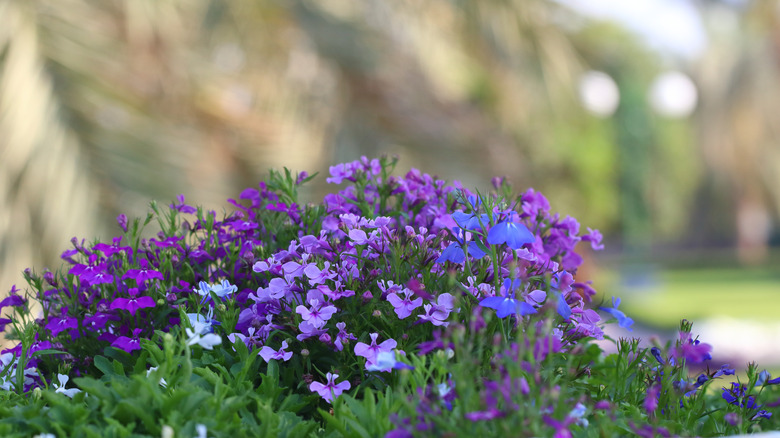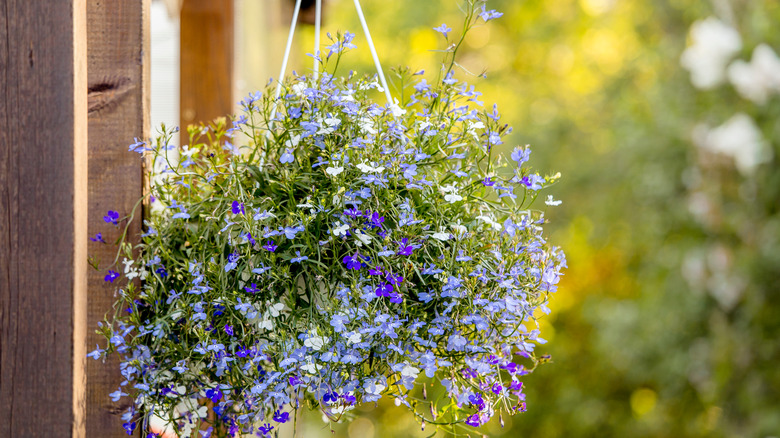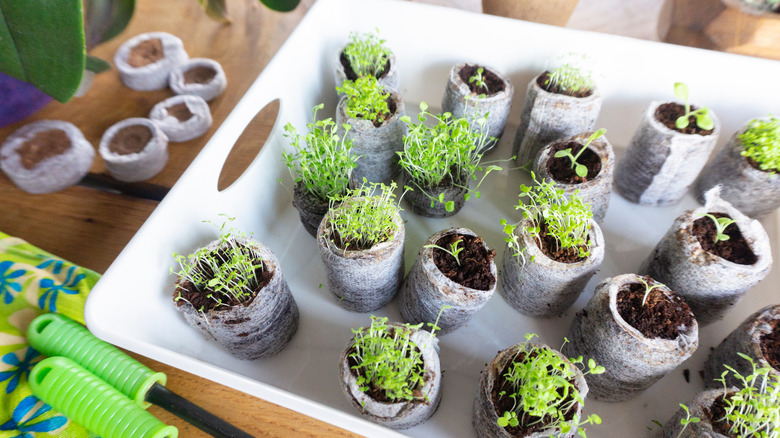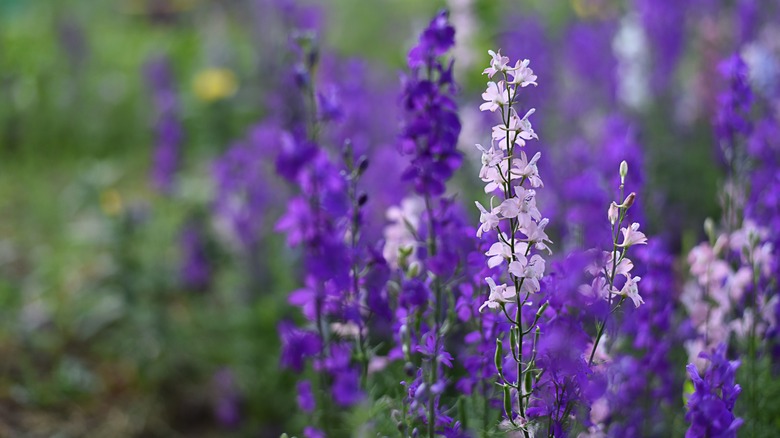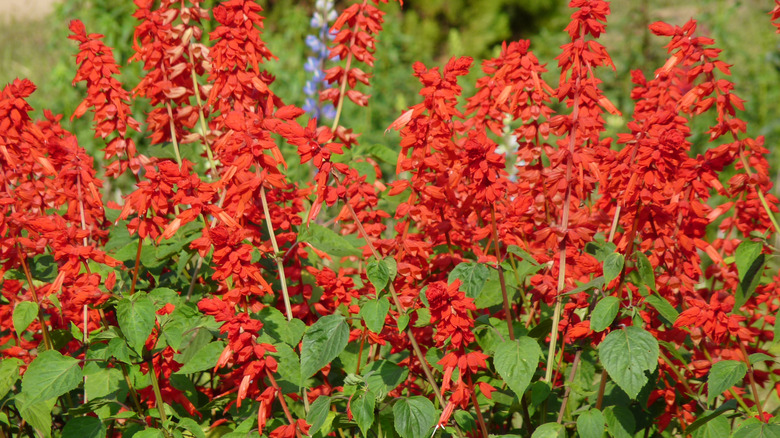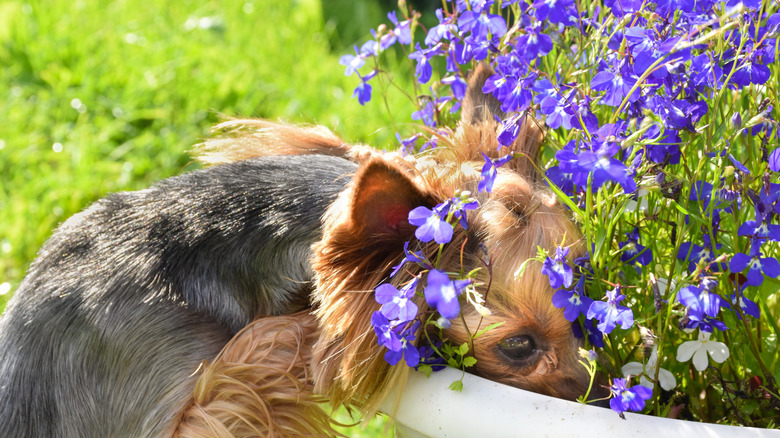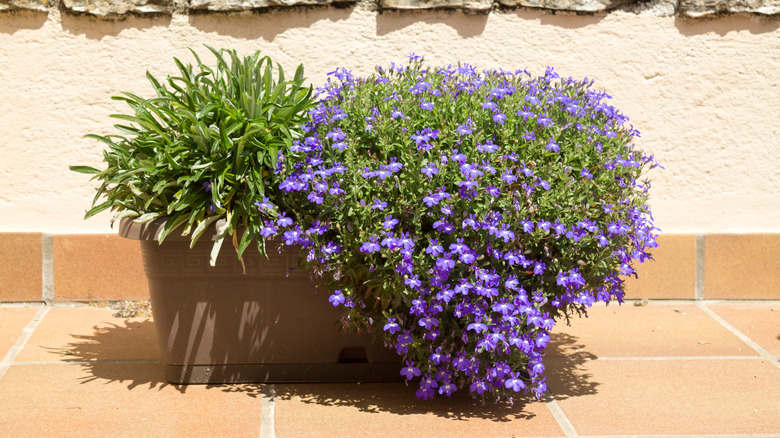How To Grow And Care For Lobelia Plant
Lobelia, also known as lobelia erinus, is a beautiful flowering plant that blooms all summer long. Lobelia is available in both an annual and perennial variety, and the care instructions are similar for both. These flowers are most commonly blue or violet in color but can also be seen in shades of white, pink, and red. Lobelia grows to heights of a few inches tall up to 3 feet, according to Gardening Know How. The small flowers of trailing lobelia plant varieties are often used in gardens as ground cover or to fill decorative containers.
These low-maintenance and long-blooming plants are perfect for beginners or hands-off gardeners. They are native to Southern Africa and have a long history of use for medicinal purposes. For example, lobelia was once used as a treatment for asthma as well as to induce vomiting in patients. Today, these plants make attractive additions to a summertime garden with their bright colors and dainty blooms.
How to use lobelia in garden
Lobelia is a versatile plant that can be used in various ways in your garden. Garden Design explains that lobelia is popular with hummingbirds and other pollinators, making it a perfect companion for fellow pollinator-attracting plants in your garden. Spreading varieties of lobelia make for an excellent ground cover option while trailing individuals can be used in containers and hanging baskets for a dramatic look. Upright varieties will stand out when arranged in the center of your garden while adding height to your landscaping.
This plant can also be arranged along a border to grow in front of taller plants. Because of its spreading nature, lobelia can be used to fill in the gaps between other plants as well. With so many colors to choose from, consider pairing your lobelia with a wide variety of other spring and summer-blooming flowers for a vibrant color palette. Popular companion flowers include impatiens, violas, and sweet alyssum.
How to grow lobelia
Growing lobelia is an easy process, making it an ideal plant for beginner gardeners. Gardeners Path explains how to propagate lobelia. You will need to purchase or gather lobelia seeds and start them indoors two to three months before the last frost date.
The small size of lobelia seeds causes them to stick together, so planting them in trays with multiple cells is recommended. First, add seed starting mix and then drop a few seeds on top. Try to spread them out on the soil, so they aren't clumped together. Then press the seeds and surrounding soil down, but do not cover them entirely. Place the trays in direct light and maintain the soil moisture with regular watering or misting, taking care not to disturb the seeds when doing so. After about a month, the seedlings will reach a few inches tall and you can then plant them outside.
Ensure that the last frost has officially passed and that nighttime temperatures are above 60 degrees Fahrenheit before you transplant your lobelia seedlings. For about a week, place the seedling trays outside for a few hours a day so they can get used to the elements. Then, dig holes in your beds or containers that are about the same size as the seedlings and gently remove them from the tray. Plant them in the holes, about 4 to 6 inches apart.
How to care for lobelia
Lobelia is considered a low-maintenance and easy-to-care-for plant. It needs full sun to thrive but can also do well with just partial sunlight, explains Burpee. Lobelia enjoys moist conditions, and watering it once a week will help ensure it blooms all throughout the summer months. This watering can be taken care of by rainfall, though, so test the soil with a finger before supplying extra moisture. Lobelia isn't too picky when it comes to fertilizer, either. Planting it with a slow-release formula is a good option because the lobelia will reap the benefits of the fertilizer without becoming over-fertilized.
One other care tip is to deadhead your lobelia during the growing season. Some sources explain that deadheading isn't necessary, while others encourage the practice, including Burpee. If you notice your lobelia has a lot of faded blooms, it might be a good time to pinch them off, which will encourage new growth.
Lobelia varieties
There are hundreds of types of lobelia plants that range in size and color. You can find varieties standing at only a few inches tall when fully grown, as well as others that reach several feet. Popular colors include pink, red, violet, and blue. The Spruce discusses a few such varieties of lobelia.
-
Lobelia cardinalis (Cardinal Flower): This unique variety of lobelia grows upward instead of outward and boasts bright red blooms.
-
Lobelia siphilitica (Great Lobelia): This is a violet-colored variety that features tall clusters of flowers.
-
Lobelia erinus (Laguna): Serving as more of a ground cover plant, this lobelia variety has small purple-blue blooms and is especially resistant to hot temperatures.
-
Lobelia erinus (Alba): The white blooms are often featured in containers and hanging baskets because of their trailing nature.
-
Lobelia erinus (Rosamund): With striking pink-red flowers, this variety of lobelia makes for a beautiful container plant as well.
Is lobelia toxic?
Although lobelia plants have a lot of positive qualities and are a beautiful addition to any garden, they are considered toxic to pets, as per the ASPCA. When consumed by both cats and dogs, lobelia can cause vomiting. It can also be fatal in large quantities. It is best to plant these flowers in an area of your garden that your pet doesn't have access to. If you witness your pet eating lobelia plants or suspect that they have, seek veterinary attention immediately.
Lobelia is also considered toxic to humans and can cause symptoms such as nausea, vomiting, diarrhea, rapid heartbeat, and hypothermia, points out Mount Sinai. For these reasons, it is unsafe to plant lobelia in an area where children freely roam and may try to eat them. Always make sure to research the toxicity of any plant before planting it in an area where children and pets have open access.
How to repot lobelia
Potting lobelia is a smart move if you want the option to change up your garden arrangement from time to time. If you end up potting this plant, you will need to regularly repot it as it grows. Annual lobelia plants may be repotted simply to change the look of your garden, while perennial varieties sometimes need to be divided if they become too large, as per SFGate. Thankfully, the process isn't too difficult. Well+Good details how to go about the task.
It is recommended that you repot your lobelia plants on a cloudy day to help the roots retain moisture that the sun might otherwise dry out. To get started, first dig up the original plant. At this point, you can separate larger clusters to be planted in other areas around your garden. Fill the new container with potting mix, leaving a hole in the middle that is similar in size to the roots of the original plant, and situate the root ball in the hole. Make sure to water the plant for the best results.
